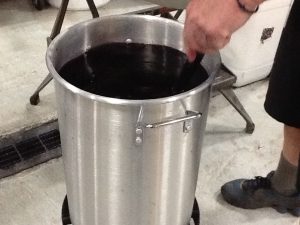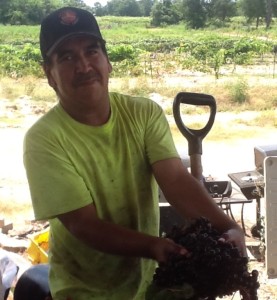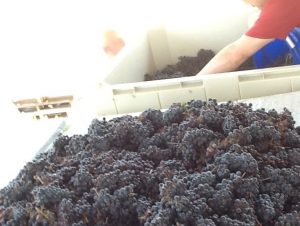How Big Retail Is Wrecking The Texas Wine Business
How many times have you gone into a liquor retailer looking for a specific wine and been told “Oh, the reason you can’t find it is because the Texas wines are over there”. Have you noticed, that frequently, “Over there” really means “Back there.”
I have begun to question the reasoning behind store schematics that takes a specific regional wine and (effectively) locks it up, prisoner, to a separate, and frequently, remote section of the retail area. Does a Texas wine section really stimulate sales, or does it guarantee that your product won’t be seen by the majority of wine shoppers?
One recent experience with one of the large Texas retailers points up the problems that Texas wineries face in the crowded wine market.
After, not less than a dozen phone conversations with the wine buyer for the retail establishment that included ridiculous comments made by the buyer about our labeling such as, “I don’t like your labeling” and “You’ll need to change your labels”, this, in spite of the fact that our labels have garnered wide spread praise in the wine world, and have been used as examples of quality labeling at the various grape expos. Meanwhile, amidst all of the label grumbling, you’re presented with a long list of excuses why the buyer simply doesn’t have the time to sample the products.
Assuming you have the patience and perseverance at a level granted to few mortals, you might end up with that five minutes with the retailer to offer up your wines! In this case, two months later, there we were, working our way thru the maze of the Mega store on the outskirts of Houston. In the treasures you are carrying is a Double Gold Medal Merlot Blend, a World Bronze Medal Texas Heritage Wine, a World Bronze Medal Chambourcin, and two delicious semi-sweet French American Hybrid Wines. Wow! Looks like a slam dunk doesn’t it!
The first warning sign that hits you is the demeanor of the buyer, and his little cubicle office overflowing with reams of computer print outs. Granted, we have some higher end wines that are priced that way for a specific reason, but our French Americans are priced for the retail market right in the middle of the range for most table wines. It took only a couple of seconds for the buyer to attack our pricing, even though it is commensurate with similar wines (both domestic and imported). All the while you are sitting there, there is an almost palpable sense that no matter what your price is, it’s simply too much.
The buyer finally agreed to sell three of the wines, the ones we took a cut of nealy two dollars a bottle on, and rejected the more complex and interesting wines, we were then treated to a tour of the “Texas Wine Section”. And where was this section? ..ALL THE WAY AT THE BACK OF THE STORE… with cheap liquor on one side and jug wines on the other. The perfect Gulag for your products!
The guided tour was a revealing experience that included addle minded comments from the buyer like “Why don’t you take a red wine and blend it with a white wine and produce something that would be priced around $9 a bottle?” So, it really didn’t matter what it was, after all, just so it was around nine dollars a bottle! Nor did it matter how creative your wines were, or how good of a job they did representing the varietals from which they were made, it somehow had to do with the fact that they were “Texas Wines” and therefore (or so the reasoning goes) are somehow fundamentally inferior. You could safely assume that the retail buyer had never suggested to the California producers that they rush back to their blending bench and whip something up for the “misery market”.
Looking back a few years, Texas wines were, in fact, punctuated by a few truly bad examples of winemaking. And , frankly, those years served to set a nearly indelible image of Texas wines as a second rate product, that, to this day, has consumers bypassing the Texas wines in the marketplace. Acknowledging our checkered past, confronting the problems, and open discussion of the issue has proven to be the key factor in a change for the better. In recent years the trend in quality production has seen overwhelming improvement, with some excellent wines starting to emerge from the various regions in Texas. You would think the time for change has come, right?
If there’s a Texas Cabernet that is on equal footing with, say, some of the better Napa wines, then why not let the Texas wine compete on equal footing? Many retailers are moving away from the “Texas Section” concept to simply grouping wine by varietal types. Promoting Texas wines even in this schematic is easily accomplished by identifying the varietal (or blend) as a Texas product. Simple huh.
But then there’s that troubling thought that looms over this issue. Many retailers use the Texas Section (the Gulag) as a tool to push the smaller wineries into disasterous price concessions and a product placement that leads to poor turnover, that, in turn, leads to yet another round of price cutting. The reasoning stems from a mindset that goes like this, “Oh well, that’s a Texas wine and it goes over there…..and if it’s over there it’s $2.00 cheaper than the wine (same varietal) that’s a couple of isles over.”
It’s especially aggravating to wineries when you’ve lost 35 cents on the dollar on your product, and then, are expected to stand in the retailers store, and pour samples (at your own expense) to promote the product. It’s like expecting the engineers and assembly workers at Boeing Aircraft to stand in DFW promoting their airliners! That’s the job of the retailers like American Airlines, not the manufacturer!
Combine the price cutting, with confiscatory rates charged by the various distributors, and you have an impending storm developing in the Texas wine business that threatens most of the startup wineries in the state, and will only serve to reduce the quality and diversity of the wines in general.
The intent of the Texas Winery Protection Law was to return Texas to its rightful place in wine history. It’s as if the Legislature enacted a carefully crafted law but forgot that greed and averice on the part of Big Retail and the Distribution Tier of the business would have them spending ALL of their spare time trying to figure out how to undermine a well thought out piece of legislation.
A more enlightened approach would be to enact legislation requiring retailers to carry a minimum percentage of Self Distributed wines in return for a reduced sales tax on sales. This method would end up a zero sum game, because the amount of sales tax relief to the retailer would be offset by the increase revenue from the sales of Texas wines and the associated business generated by the Texas wineries.
Texas wineries are constantly bedeviled by a host of regulatory problems that range from onerous reporting rules that, rightfully, are the responsibility of other agencies (outside sales reporting), mountains of ridiculous, antiquated, rules that limit their ability to serve their products to the public, and an (apparently) endless line of agencies (repleat with some real zealots) that seem to attempt to justify their existence by creating more paper work.
If the State of Texas is serious about building this important component of the Texas economy, then it’s time to act to create an environment where the opportunity to grow is assured for all of wineries, not just a few. The issue of aiding the Texas wineries, in an effort to gain more access to the market, is definitely within reach.
RLW
















